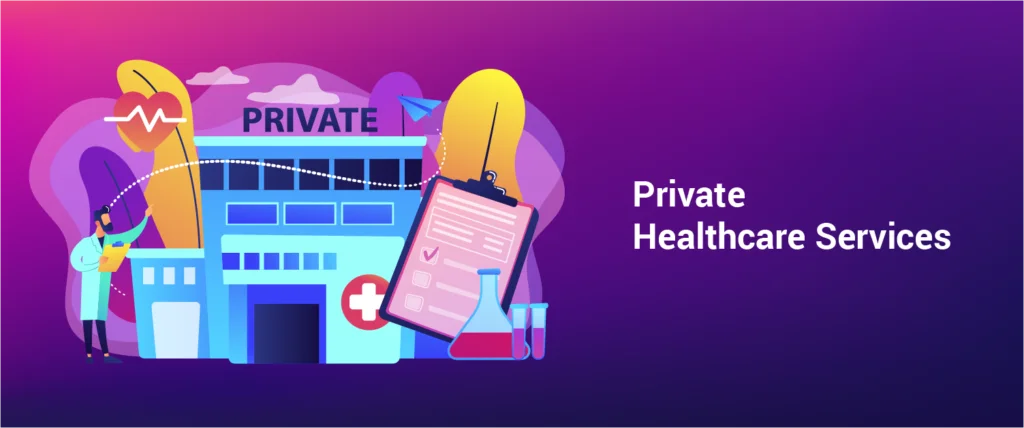Introduction
Private healthcare markets comprise individuals and entities that are not owned or operated by the government. Individuals finance private healthcare services from disposal income, or pooled premium contributions through private health insurance providers. The provision and financing of private healthcare services does not include funding by the government.
There are several advantages for patients when choosing private healthcare services. The benefits included:
- The freedom to pick the location and provider of healthcare services.
- Reduced waiting times to access healthcare services.
- Better and updated facilities at clinics and hospitals.
- Improved continuity of care and personalised attention.
When governments regulate private healthcare services in middle-income countries, they address structural weaknesses in the private healthcare markets. It also results in limiting some of the above-mentioned benefits.
This post provides two examples of the unintended consequences of regulating private healthcare markets. Both examples focus on South Africa, that is, implementing Single Exit Price regulations and changes in the private health insurance market. We end the post with recommendations on improving the efficiency of South Africa’s private healthcare markets.
Although South Africa is a specific case, our experience suggests other countries with substantial private healthcare markets also confront similar challenges. Such countries include Brazil, Saudi Arabia, the United Arab Emirates, among others.

Figure 1: Regulating private healthcare services in Middle-income Countries
South Africa’s health financing landscape
The health financing landscape in South Africa comprises a private and public sector.
Individuals finance the private health sector through pooled health insurance and out-of-pocket contributions covering around 9 million lives in a total population of 55 million. This number is much higher because it does not account for individual out-of-pocket contributions. Private health insurance companies provide health coverage for employed, self-employed, and high net-worth individuals.
The government covers the healthcare needs of the remaining population from public healthcare budgets for the unemployed, poor, and individuals unable to afford private health insurance premiums.
Single Exit Price regulations: A Source of Harm to Competition.
When South Africa introduced the Single Exit Price regulations; medicine price inflation, medicine price transparency, and medicine price uniformity were all significant problems.
Medicines price inflation was in the double digits during the 1990s and early 2000s. It was impossible to determine the true price of a medicine given the use of discounts and rebates between manufacturers, distributors, and retailers. As a result patients were paying different prices for the same medicines.
The Single Exit Price regulations addressed these issues by reducing medicine price inflation and improving medicine price transparency. It also ensures patients pay the same price for medicines irrespective of point of access.
Price Negotiation
However, the Single Exit Price regulations limits price negotiation.
A multinational pharmaceutical company sets the price based on international pricing standards, economic value propositions, and corporate pricing policies. At the time of launching a new medicine, the government prevents all companies (the Single Exit Price regulations) from negotiating the single exit price.
Our experience suggests that if the government permitted price negotiation between market participants, new medicine prices could be lower. Some multinational pharmaceutical companies would accept a lower price for increased volume. If the new medicine is reimbursed by large medical schemes such as Discovery Health, GEMS, Bonitas, and Momentum then the price could be lower.
The Single Exit Price regulations is a significant deterrent to price negotiation and prevents patients from getting better prices for new medicines.
South Africa’s Private Health Insurance Industry: A Strategic National Asset under Threat.
The South African National Health Insurance aims at moving the policy of universal health coverage further down the road. A National Health Insurance system will integrate both public and private healthcare systems leading to improved solidarity and redistribution of healthcare resources.
Every South African would contribute to funding the National Health Insurance system and in return receive “free” healthcare services when needed.
Government and the private sector discuss much about the viability of a National Health Insurance in South Africa. Among the issues cited are;
- High unemployment levels in South Africa (that is, a small pool of taxpayers to fund the NHI system),
- Poor public healthcare infrastructure, and
- Limited human resources to deal with the expected increase in demand that goes with introducing “free” healthcare services.
All of this makes for a great conversation on how NHI is implemented.
Competing Ideas
There are two fundamental and competing ideas on national health insurance. On the one hand, is the idea that they can only achieve universal health coverage through public financing and public provision of healthcare services. Government-run institutions collect and disburse funds for the NHI system. Similarly, government-run facilities provide healthcare services through a network of clinics and hospitals. In contrast, is the idea that they can only achieve universal coverage through private sector financing and private sector healthcare provision.
The first idea assumes no private sector involvement in the healthcare system while the second idea assumes no public sector involvement. The ideas are extremes, fundamental and pervasive because they influence much of what we think and say on South African national health insurance.
For example, News24 reported the former Minister of Health as saying:
“When asked whether private medical aid schemes would be absorbed, and if they would be made redundant, Motsoaledi said that all state medical aids would be made redundant, but that the question of private medical aids’ future would still need to be answered.”
The issue is whether the private health insurance industry has any role in the financing and reimbursement of healthcare services under the national health insurance system.
Private Healthcare Services: the Engine of Economic Growth
South Africa’s private health insurance industry covers the economically productive (that is, individuals contributing to the gross domestic product of the economy). Therefore this industry is responsible for individual health and the health of South Africa’s economy.
Individual health depends in part on the ability of the private health insurance industry to finance primary, secondary and tertiary healthcare services. South Africa’s economy depends on healthy and productive individuals.
The private health insurance industry is a Strategic National Asset. It is comparable to South Africa’s defense sector responsible for maintaining sovereignty and national security. The private health insurance industry is also similar to South Africa’s higher education sector, a strategic national asset that supplies skilled labour for the domestic economy.
Strategic national assets maintain the health, security, and competitiveness of the national economy. They contribute to creating jobs, corporate taxes, and skills development.
They are also strategic national assets because they generate significant positive externalities. That is; a healthy and productive individual contributes to national wealth creation, personal income tax, and generates consumption in the economy (vehicles, housing, food items, etc.).
Strategic national assets are not substitutable. Replacing South Africa’s defense sector and the higher education sector with activities that achieve the same outcomes seems impossible and farfetched. It appears optimistic to replace the private health insurance industry and its direct effects on individual health and the health of the national economy.
However, Strategic National Assets are not beyond reform.
- Private health insurance in South Africa is unaffordable and inefficient.
- Reimbursement policies for basic and advanced treatment and care services vary among health insurance providers.
- The level of new health technology investment has stagnated given health policy uncertainty.

Figure 2: Regulating private healthcare services in Middle-income Countries
Conclusion
In South Africa, we recommend:
- Policy-makers enable medicine price negotiation and investigate the unintended consequence of Single Exit Price regulations,
- Enabling all market participants to benefit from a negotiated price between medicine manufacturer and large medical schemes,
- Less ideological debates on national health insurance and focus on the determinants of health and growth in the economy.
Our healthcare consulting services includes evaluating the impact of current and new policies on healthcare markets by comparing policy options, monitoring un/intended consequences, and quantifying societal benefits.
Table of Contents

